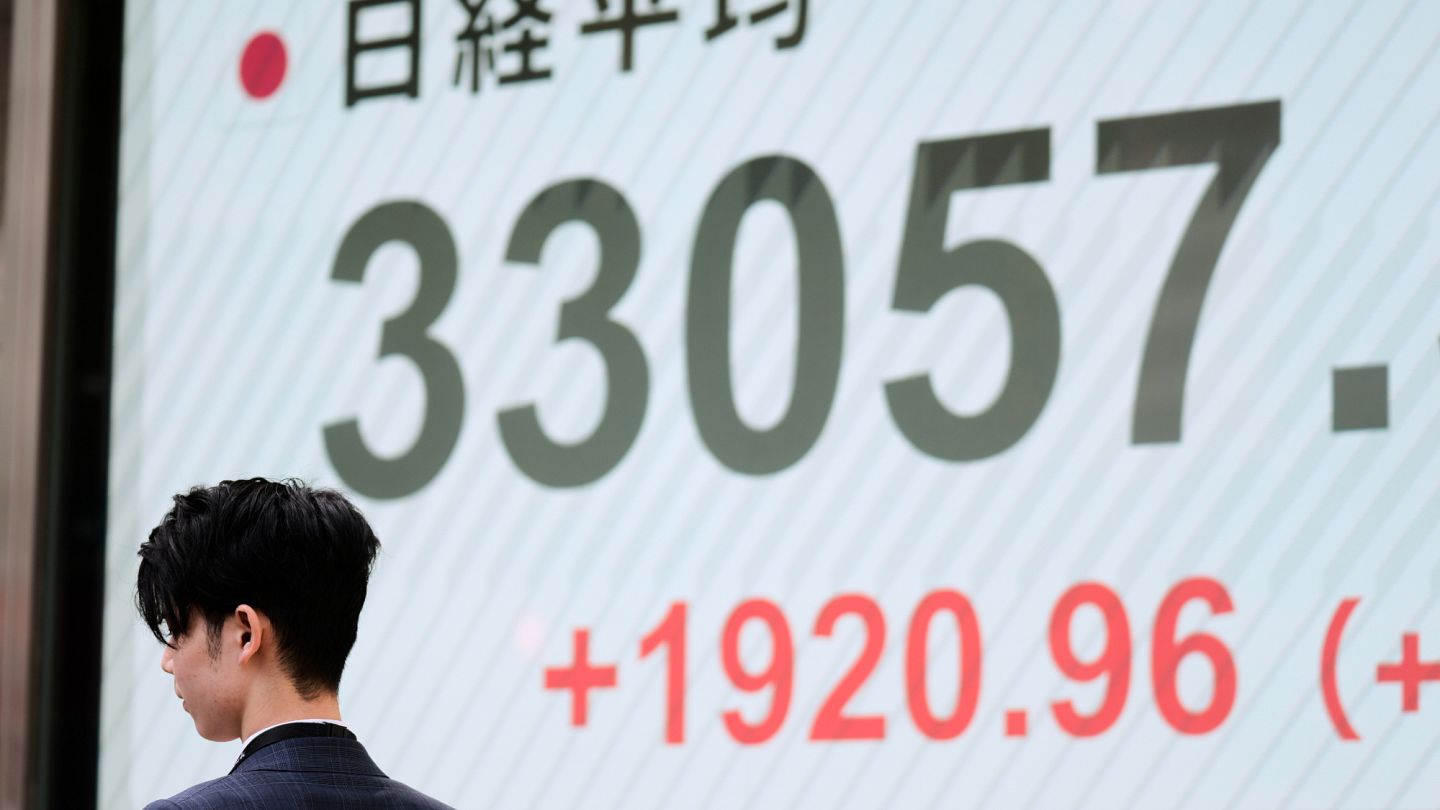Asian stocks and U.S. futures gained value as investors continued to buy.
Asian markets began the day on Tuesday with gains, and Japan's Nikkei 225 stock index rose more than 6% after a decline of nearly 8% the day before.
While investors awaited the opening of European markets, there was a much calmer picture in the Asia-Pacific overnight compared to Monday. However, markets in Thailand and Indonesia experienced declines as they reopened after the holiday. Trading was briefly halted in Jakarta when the JSX index dropped by more than 9%, and it showed a decline of 7.5% by midday. Thailand's SET index lost 5.7% of its value. In Taiwan, the Taiex fell by 4.4%, impacted by losses from the world's largest computer chip manufacturer, Taiwan Semiconductor Manufacturing Corp. The company's shares fell 4% on Tuesday and have decreased by 13.5% since Trump announced "Day of Liberation" tariffs on April 2. The recovery in much of the other regional markets followed a day of collapse on Wall Street, where stocks lost value after President Donald Trump's threat to increase double-digit tariffs. The Chinese Ministry of Commerce stated early Tuesday that it would "fight to the end" to protect its own interests and would take unspecified countermeasures against the U.S. after Trump's threat of an additional 50% tariff on Chinese imports. By early afternoon Tokyo time, the Nikkei 225 was up 5% at 32,691.34. Hong Kong also recovered some of its losses but did not approach the 13.2% drop on Monday, which marked the worst day for the Hang Seng since the Asian financial crisis in 1997. The Hang Seng gained 1.6% to reach 20,140.78, while the Shanghai Composite index rose 0.9% to 3,124.77. South Korea's Kospi index increased by 0.1% to 2,331.80, and the S&P/ASX 200 index rose by 1.7% to 7,471.10. Markets in New Zealand and Australia also rose. Investors are waiting for Trump's next move. On Monday, the S&P 500 lost 0.2% as shocked investors awaited what Trump's next step in the trade war would be. If other countries accept trade agreements, Trump could lower tariffs and avoid a potential recession. However, if he remains committed to tariffs for a long time, stock prices may decline further. The Dow Jones Industrial Average fell by 349 points or 0.9%, while the Nasdaq Composite index rose by 0.1%. All three indices began the day sharply lower, with the Dow dropping to as low as 1,700 points after worse losses elsewhere in the world. However, late in the morning, it suddenly gained nearly 900 points. Meanwhile, the S&P 500 recovered from a 4.7% loss to a jump of 3.4%, which would be the largest bounce in recent years. The increase came after a false rumor that Trump was considering a 90-day pause on tariffs, which the White House quickly labeled as "fake news." The ability of a rumor to mobilize trillions of dollars in investments shows how much investors hope to see signs that Trump might backtrack on tariffs. Stocks quickly fell. Shortly thereafter, Trump took a tougher stance, stating that he could further increase tariffs against China after the world's second-largest economy retaliated with its tariffs on U.S. products last week. Trump, who stated that he wanted to bring factory jobs back to the U.S. and that it would be a process that could take years, also said he wanted to narrow trade deficits with other countries, although it is unclear how much negotiating space there is on the U.S. side or among trade partners. Indices fluctuated between losses and gains. Indices fluctuated between losses and gains on Monday, partly because investors hoped that negotiations could prevent the strict tariffs from being effectively implemented on all imports. The only certainty appeared to be the financial pain affecting investments around the world. Fears that the weakening global economy would burn less fuel due to trade barriers also led to a drop in oil. The benchmark U.S. crude oil fell below $60 a barrel for the first time since 2021 on Monday. Early Tuesday, it rose by 90 cents to $61.60 per barrel. International benchmark Brent crude rose by 89 cents to $65.10 per barrel. In currency trading, the U.S. dollar fell to 147.78 yen from 147.85 yen. The euro dropped from $1.0905 to $1.0976. Gold prices rose by $32 to approximately $3,006 per ounce. Bitcoin rose by 4.1% to $80,130.


